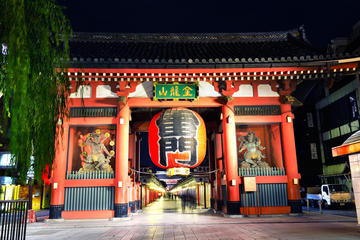Thunder Gate (Kaminarimon)
TIME : 2016/2/22 11:49:55

Thunder Gate (Kaminarimon)
The symbol of the Asakusa neighborhood in Tokyo, Japan, the impressive, large, red Kaminarimon, or Thunder Gate, gives visitors a grand welcome to Senso-ji Temple (Asakusa Temple). Standing 38 feet tall (11.7 meters), Thunder Gate gets its powerful name from Raijin, the god of thunder, one of the two deities it honors. Four statues guard Thunder Gate: at the front, the Shinto gods of wind and thunder attract the most attention. The other two – a Buddhist god and goddess - rest at the reverse side of the gate. Under Kaminarimon, a giant red lantern draws the eye next. The fragile piece was restored and donated to the temple complex in August 2003 to commemorate the 400th anniversary of the start of the Edo period.
Kaminarimon’s history dates back to the year 941, when a military commander constructed the now iconic gate. Over the centuries, it has been destroyed by fire at least three times, and has always been rebuilt on the same ground. The current structure dates to 1960. Today, locals gather at the imposing gate to pray for peace in the world, fruitful harvests, and protection against natural disasters.
Practical Info
Thunder Gate and Senso-ji temple are a five-minute walk from the Asakusa subway stop in Tokyo. The station can be reached on the Ginza Subway, Asakusa Subway Line, and Tobu Railway. There is no entrance fee to visit the Gate or the temple, and the grounds are always open.
